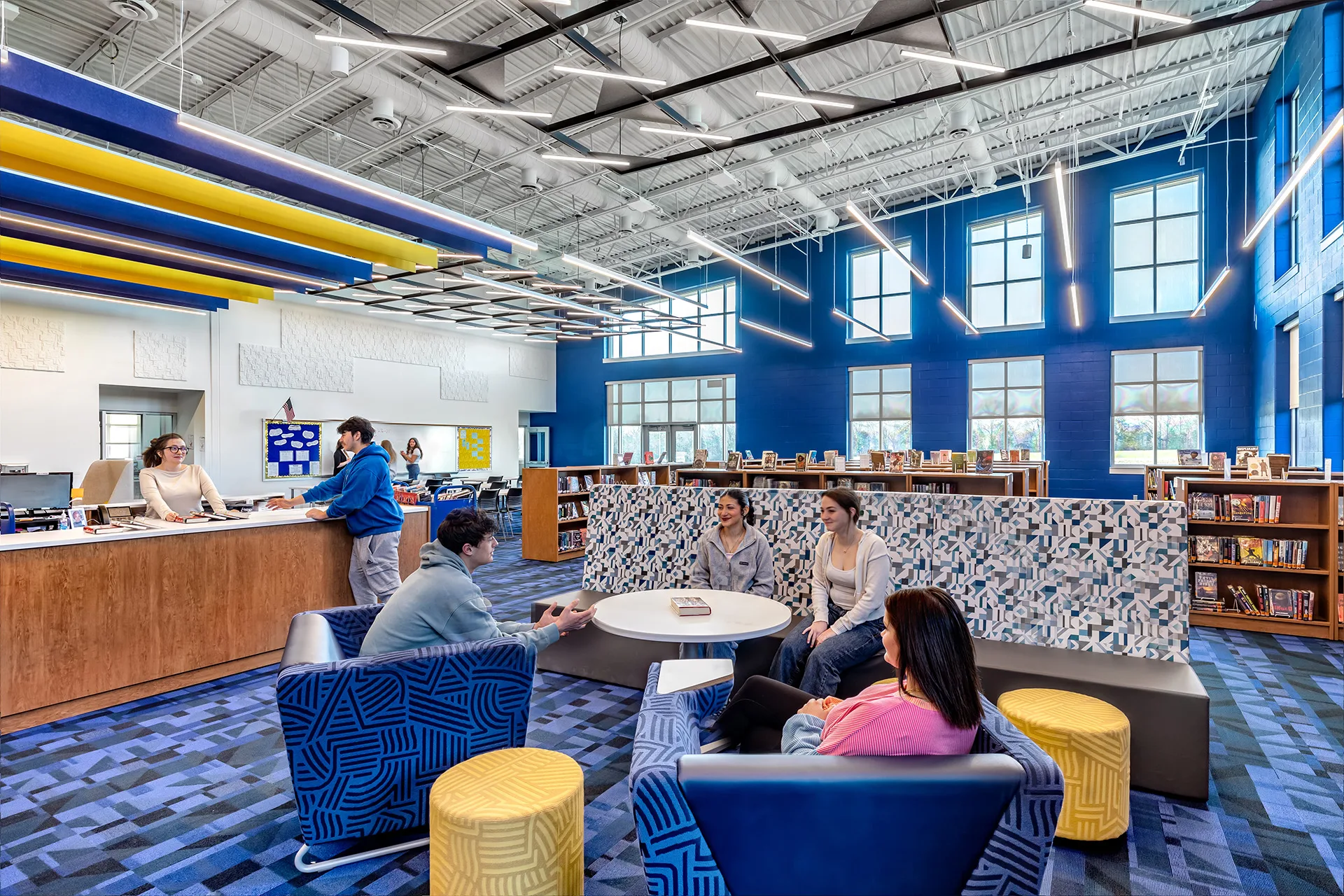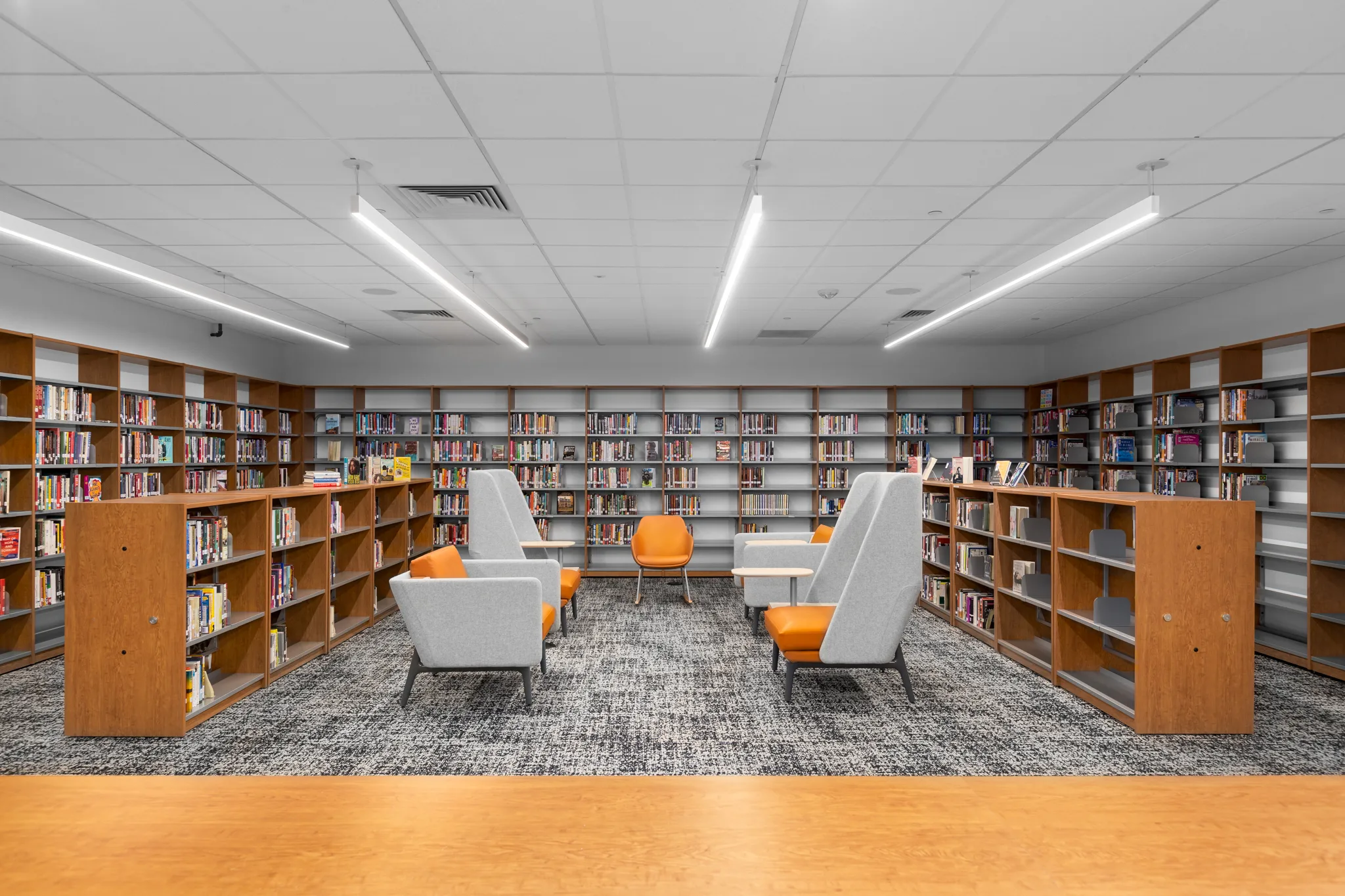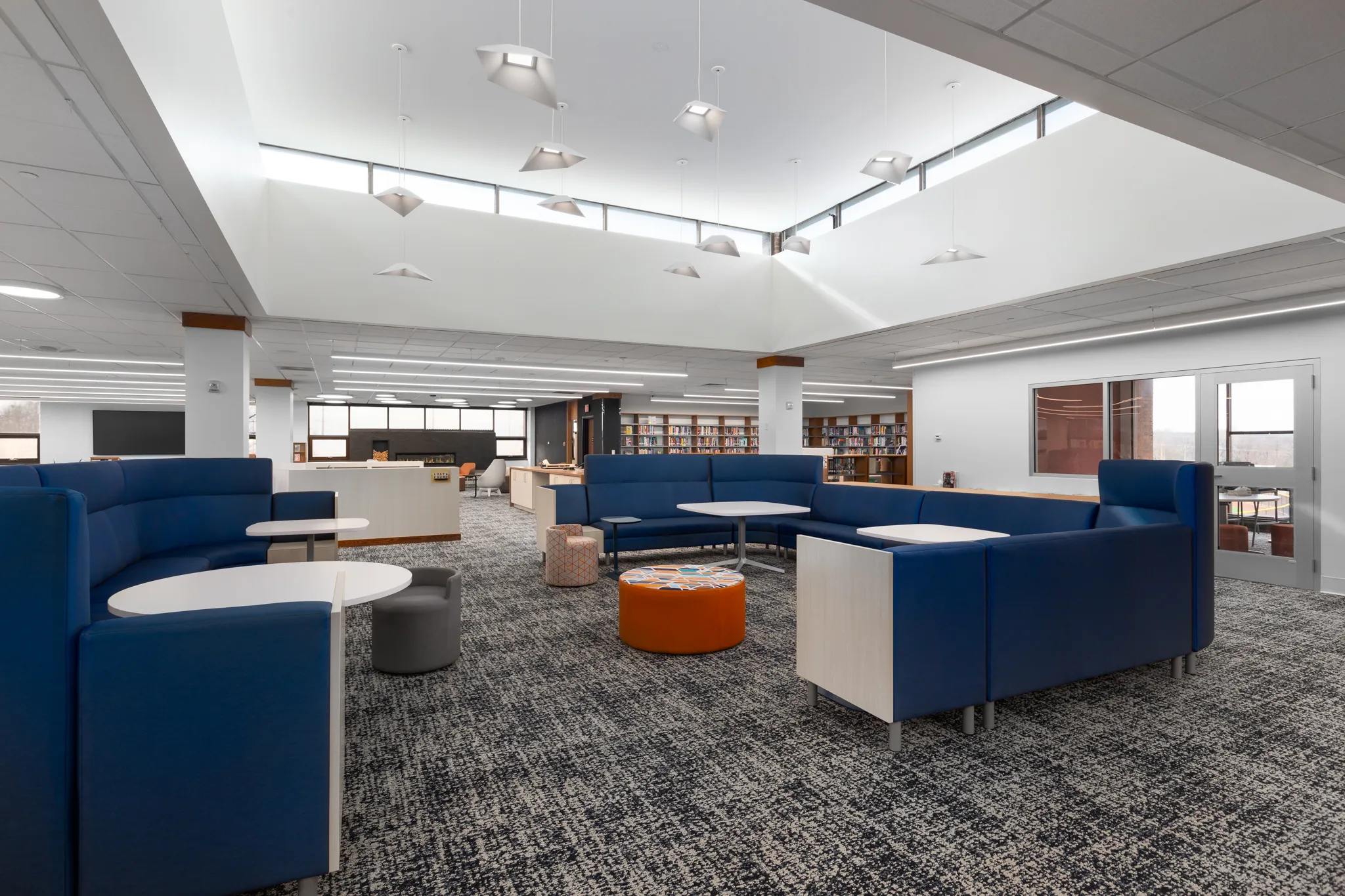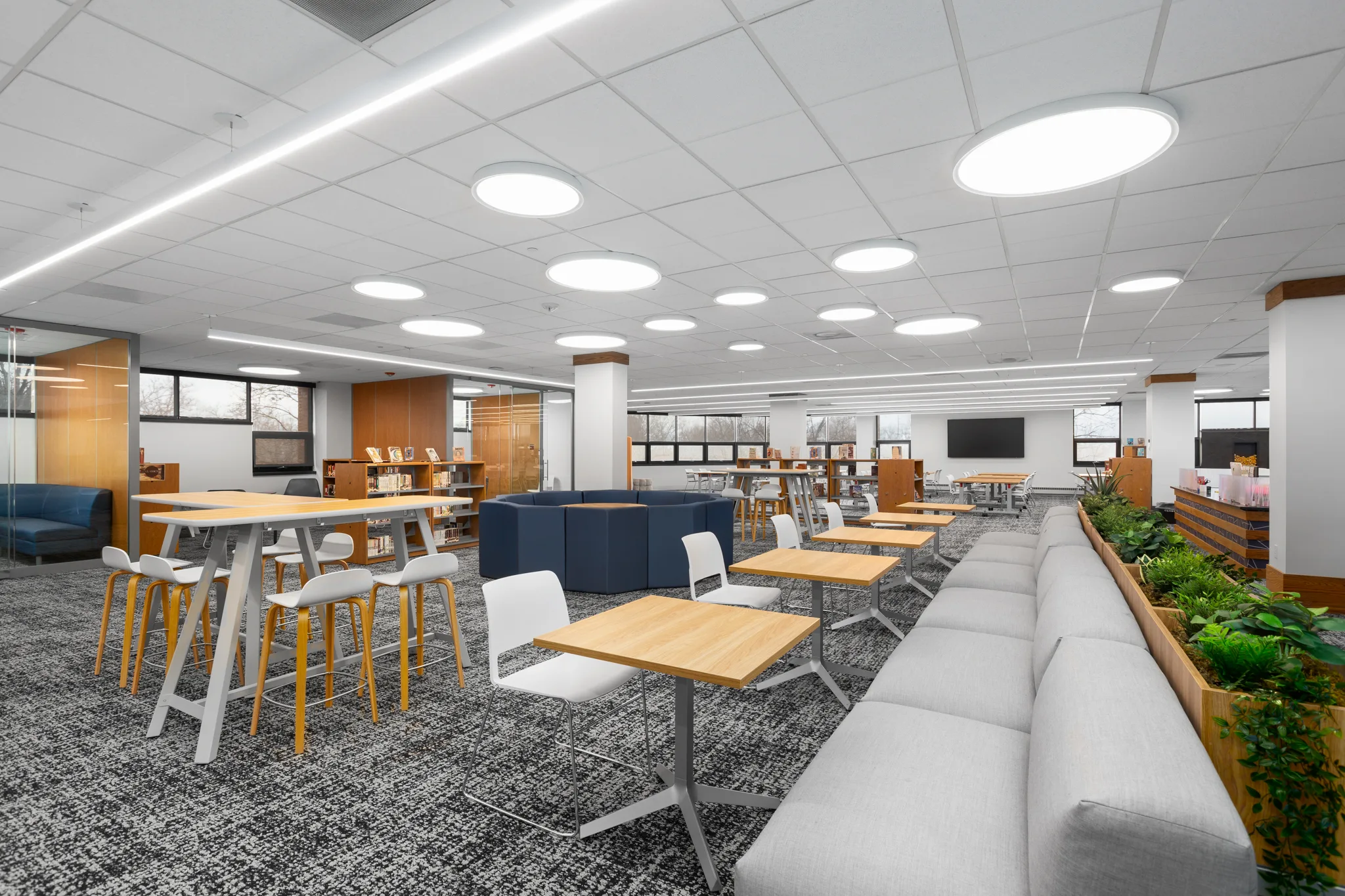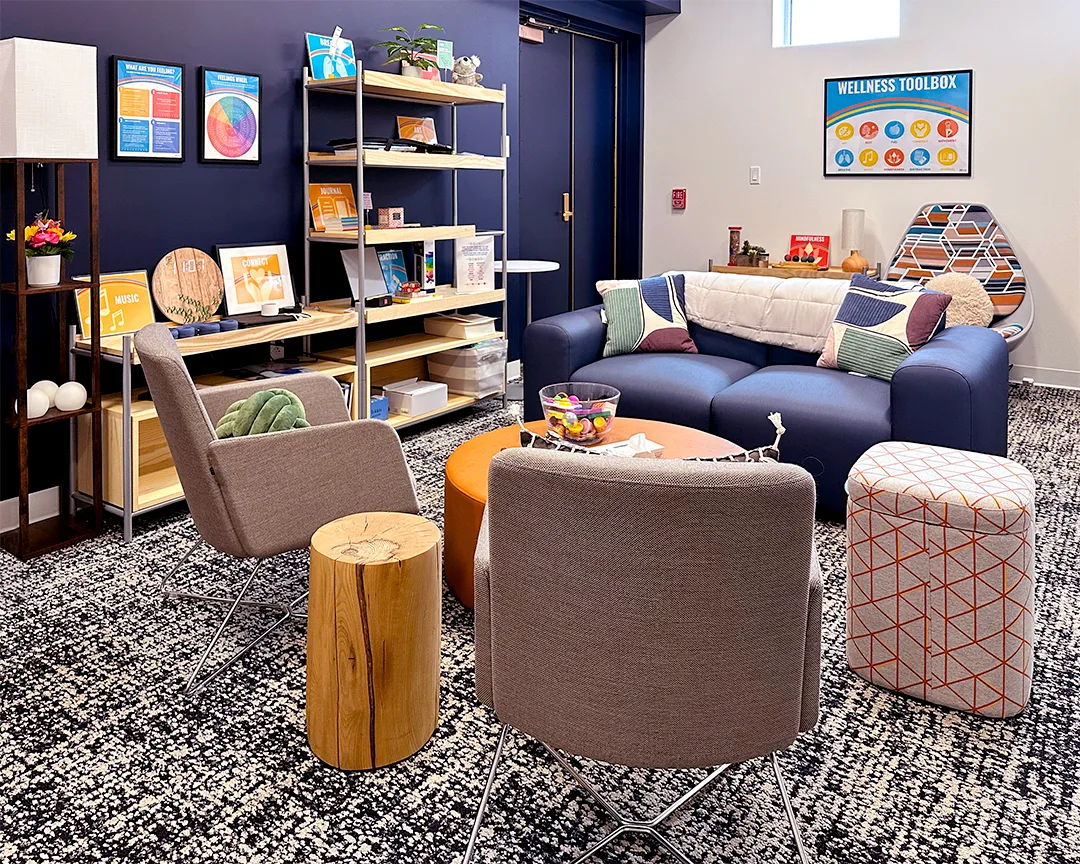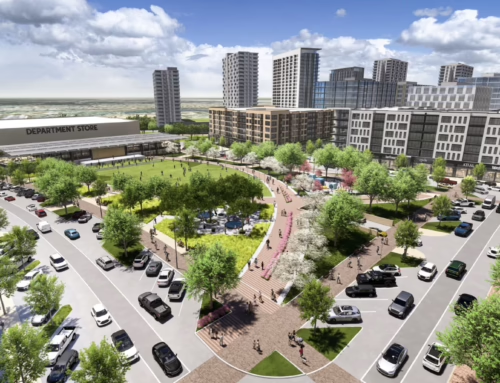Andrea Giovando believes design has the power to improve your day–and even your life.
The principal and senior interior designer at Bond Architects was first introduced to the formal concept of trauma-informed design while working with Places for People–a local nonprofit that offers personalized, evidence-based care for mental health and substance-use disorders. The firm has applied the theory to every one of its projects, from libraries to schools to community organizations physical environments have on mood and behavior, and applies insights from psychology, sociology, and neuroscience to create spaces that feel welcoming, safe, and respectful of an individual’s identity and dignity,” according to Bond Architects.
In building Places for People’s new center, that meant incorporating comfort and autonomy of choice into the architecture, from private, serene sitting areas to spaces that foster communal activity without threat of sensory triggers.
“When you come into that space, you have people literally coming off the streets that are at their lowest of low moments,” Giovando says. “They have no idea what to do next. So the first thing that we wanted to do was give them a space that was beautiful. I wanted them to realize that they were coming into a place where they could change their life.”
The practicalities of that goal, which Giovando says also referenced neuroaesthetics and biophilic design, involved:
- Rebranding the entryway “panic room” into a secure, safe space with no corners and plenty of open visibility
- Creating waiting rooms attuned to self-soothing
- Utilizing color theory to select cooler, more calming tones
- Implementing peace-inducing greenery, tactile wall treatments and décor
- Building separated spaces that allow people to catch their breath
- Offering multiple seating zones, such as individual rocking chairs, sofas for families to sit together, and cocoon chairs for solitude
Acoustics and lighting also play major roles in trauma-informed design, and each space addresses multiple needs. “What we have found is, there’s a time and a place,” she says. “So in a library, for example, we have rooms that need to be acoustically quiet, and then we have rooms that could be a little bit louder.
Giovando wishes “trauma-informed design” would be known as “choice- based design,” as it’s beneficial for everyone’s wellness, regardless of their trauma level. “Having the option to work and live how people want to in a day is really what it is, and that can help literally anybody,” she says. “Of course, it serves a community that’s processing trauma or that is in a state of panic, but it’s really just health and wellness, and giving people the option to choose. You wake up on the wrong side of the bench sometimes, and you’re just not a people-person that day. That day, you just need to be able to focus on what you need to do in silence. Maybe you wake up the next day, and it’s a new day. You think, I’m gonna be different. I want to work out with everybody. I want to hear what they’re saying. I want to hear what they’re doing. So we really have just taken that message of choice in the workplace, in the school—basically in everything that we do.”
Clayton High School’s library and wellness center may be the best example of Bond’s approach. “In libraries and in classroom settings, you have anything from people who are super interested in content and reading to kids that want to be more social. Although they love school, that’s what they’re interested in. They’re more hands-on. So we want to create that environment where everybody feels safe and everybody feels like they have the opportunity to choose how they’re going to learn that day.”
The school’s library, in particular, incorporates group-learning spaces; quiet respite areas; larger quiet areas for six to eight people; one-on-one rooms; cone-shaped seating for the person who doesn’t want to be alone but does need to focus; fidget-friendly, tactile surfaces; and a “Panera-looking area because, sometimes, people justwant to be social.”
From Bond’s work at Clayton HighSchool, the Pattonville School District, and Wright City High School to its future projects in the private-school sector, color-coding and signage have been effective tools in easing kids’ stress and anxiety navigating hallways—and even high school in general. Furniture again comes into play: Open classroom spaces, for instance, have high-backed seats, which reduces distractions and improves concentration. “It’s choice- based learning,” she adds. “How do I choose to learn today? How do I choose to learn in this environment? The environment can help dictate that, but I think it’s also creating those multifaceted environments within the big environment.”
Bond is also implementing trauma- informed design at the YWCA of Metro St. Louis, Dolan Memory Care’s Waterford clubhouse, and the University City Public Library. Regardless of the space, the first question that Giovando asks any of these organizations remains the same: “Don’t tell me how you work today. Tell me how you want to work in the future.”
Much of what Bond does with trauma-informed design is data driven; the firm utilizes client questionnaires and trending issues or concerns to shape its work. At schools, this involves the educators— particularly those who work with kids with special needs—and at nonprofits, it often involves mental health professionals.
Giovando hopes people across her industry begin to understand that trauma-informed design is simply well-informed design. “It just helps people with their day,” she adds. “It’s not going to solve the issue of people who are going through something truly traumatic, but we’re going to help contribute to make their day better, by giving them those choices, by giving them an aesthetically pleasing space, by inspiring them to do better, make themselves better in whatever way they need to in that point of their life. It’s really here to just contribute to making a person live better in the places they go on a daily basis.”
How to incorporate choice-based design into your space
“I think what people tend to lose most is inspiration,” Giovando says. “But when you walk into a space that’s been well-maintained, that has some aesthetics to it—you kind of hold your head up a little bit higher…. You get a sense of, I want to be where this space is telling me it is. There is just so much value in being engaged with your environment.”
Here are her tips to instantly refresh your space:
- Put on a fresh coat of paint
- Take inventory of your furniture and add or remove what may serve your needs
- Pick a plant: faux or real, every space needs greenery
- Layer in texture, from rugs to pillows
- Choose artwork that revitalizes you
Provided by: Bond Architects

